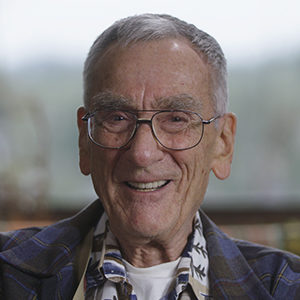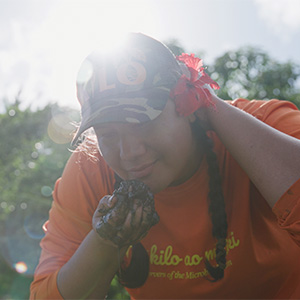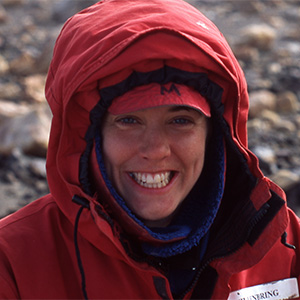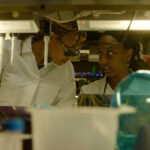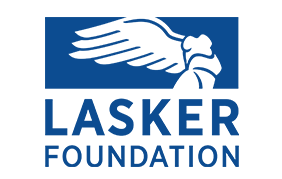Tracey Goldstein, Ph.D.: My name is Tracey Goldstein, and I work at UC Davis School of Veterinary Medicine. I’m a Professor in the Department of Pathology, Microbiology, and Immunology, and Associate Director of the One Health Institute. And what I do is really studying diseases in animals and trying to understand how they may spill over from animals into people. A good example is this coronavirus outbreak right now, where it’s affecting people, but we understand that the virus likely came from animals.
Koen Van Rompay, Ph.D.: My name is Koen Van Rompay. I work at the California National Primate Research Center at UC Davis. What we’re trying to do is create the most effective vaccines. We are also trying to develop antiviral drugs to treat people who are already infected. When there is a new viral disease, the first thing is you have to know what virus it is. You want to know who your real enemy is. In the old days, the methods were very slow — techniques like electron microscopy. These days, with sequencing the viral genome, within a few days you can usually find out what kind of virus is causing a new epidemic.
Goldstein: So, when you sequence the genome, you can start to look at where there might have been a mutation, and that will tell you what parts of the viral genome are important, for example, to enter human cells. In many of these animal viruses, they’re able to infect animal cells, but they don’t have the same machinery to infect a human cell. But RNA viruses, like ebolaviruses or coronaviruses, they… you know, their genomes are a little bit more unstable. They’re sort of always changing. These big changes in the genome, you know, they probably are happening all the time, and sometimes they’re random, but every once in a while, a change might occur in a part of that genome that allows it to suddenly become, you know, infectious in a human.
Van Rompay: To develop a vaccine against some new infectious agent, we can really learn a lot from the natural biology of the virus.
Goldstein: In order for a virus to infect a human cell, it needs to be able to bind to what we call the receptor. So, it’s sort of like a lock and key. When you think about coronaviruses, you know, the spike protein, which is the proteins on the outside of the virus… we know that that’s important for the virus to be able to enter the human cell.
Van Rompay: Once you know that, you want to see, which part of the virus should I use in the vaccine construct? What we try to do with the vaccine is to come up with a strategy that mimics a natural immune response to infection. It can either be by using a live attenuated version of the virus or taking some part of one of the proteins. We really want to have something that’s specific against the virus, but then has minimal cross-reactivity to normal host proteins, to minimize the chance for any side effects. In 2016, when Zika virus broke out, different primate centers… we started working groups. Something similar is now also starting for the new coronavirus.

Goldstein: People have been really, really forthcoming with new information as it’s becoming available, sharing it even before it’s been published.
Van Rompay: We are going to have meetings to really share our progress and brainstorm experimental designs. Soon, one of the first centers is actually going to infect some monkeys with coronavirus. We want to study diseases in animal models that mimic the human disease. We move this up from mice and rats to higher species. The species that’s most… closest to humans are actually non-human primates such as rhesus macaques. And they are usually the final step for moving something into human clinical trials.
Human trials are done in different stages. Phase 1 trial is to see, is it safe? If that looks promising, then you go to a Phase 2, where you test it in more people. And the Phase 3 trial is kind of the first one where you really want to look at, does the vaccine work? Does it protect against infection? If we can all communicate and we can collaborate very rapidly — we can share protocols — that’s kind of how we can make progress a lot faster.
Goldstein: I think during an outbreak, it’s very much a day-to-day response, trying to understand how to get ahead of the curve and control the problem. But after that is when, really, the big work begins. Many of these diseases that cause pandemics come from wildlife. And our world is changing really, really quickly. We’re moving into places where we didn’t used to go with our animals: cutting down forests to make space for farms or going into caves for mining. Our behavior is what’s facilitating, likely, the spillover.
What we’ve been doing is sampling in all these places around the world. We focus on bats, rodents, and primates. So, what we wanted to do was specifically look and see how many different coronaviruses we could find in the different species. And what was really interesting is, despite us sampling all of these different taxa, about 98% of the coronaviruses that we found were in bats. And then we mapped the diversity of the bat species that we found those coronaviruses in.
So, sort of a hotspot map. It’s got the dots of where the viruses are, and then colors of where we found high diversity of the different bat species. And that is useful because it can help us to project where we might find other coronaviruses, if we know where those bat species are.

Van Rompay: The investment that we put in infectious disease research pays off — more than just that one particular disease that you study, but really by improving the overall knowledge of infectious diseases of the immune system.
Goldstein: What there needs to be is sustained research support for these things before, during, and after outbreaks. The outbreak’s over, and then, you know, that funding goes away, and then vaccines sit in labs not being completed and not being trialed. I think we need to figure out a way to not do that, not have this boom and bust, but be always supporting that type of work. If you could sequence the genomes of, say, a bunch of different coronaviruses, how many different cell types can they infect? And then, you know, what would you have to do to change them? You could potentially, over time, generate data that would start to maybe show you some things that you could predict.
Van Rompay: We can use that existing knowledge, that database, to really come up with interventions a lot faster to attack that new disease.
Goldstein: If we can understand more about the viruses that are out there, and have therapeutics and vaccines and other things in place, we can be better prepared to respond to the next thing versus scrambling every time that something new pops up.
To find out more about our conversations with Dr. Goldstein and Dr. Van Rompay, you can read their extended interviews on iBiology:
- Continuing the Conversation: Dr. Tracey Goldstein on One Health, Bats, and Looking Ahead
- Continuing the Conversation: Dr. Koen Van Rompay on Vaccines and Animal Models
Scientific Papers Referenced:
Anthony, SJ et al. (2017). Global patterns in coronavirus diversity. Virus Evolution, 3(1).
Chen, N et al. (2020). Epidemiological and clinical characteristics of 99 cases of 2019 novel coronavirus pneumonia in Wuhan, China: a descriptive study. The Lancet, 395(10223), 507-513.
Holshue, ML et al. (2020). First case of 2019 novel coronavirus in the United States. New England Journal of Medicine.
Lauer, SA et al. (2020). The incubation period of coronavirus disease 2019 (COVID-19) from publicly reported confirmed cases: estimation and application. Annals of internal medicine.
Xu, X et al. (2020). Clinical findings in a group of patients infected with the 2019 novel coronavirus (SARS-Cov-2) outside of Wuhan, China: retrospective case series. BMJ, 368.
Kevin McLean (iBiology): Producer
Isabel Ponte (The Edit Center): Editor
Adam Bolt (The Edit Center): Editor
Chris George: Design and Graphics
Maggie Hubbard: Design and Graphics
Jeremy Poulos (UC Davis Academic Technology Services): Videographer
Images and Footage from NSF, NIH, UC Davis School of Veterinary Medicine, California National Primate Research Center, Nigel Walker
Music from APM Music (“Idea Space”), Jingle Punks (“Needle Drop”), and iSpy Music



